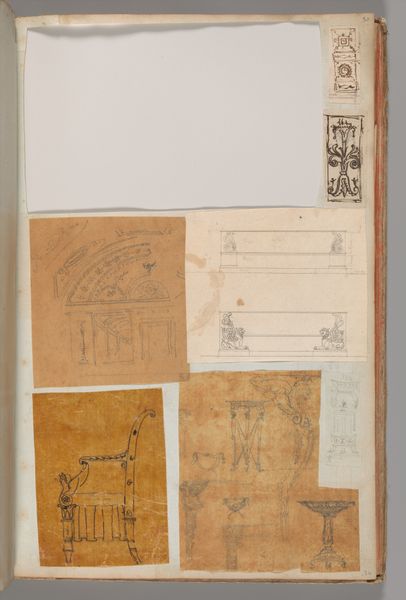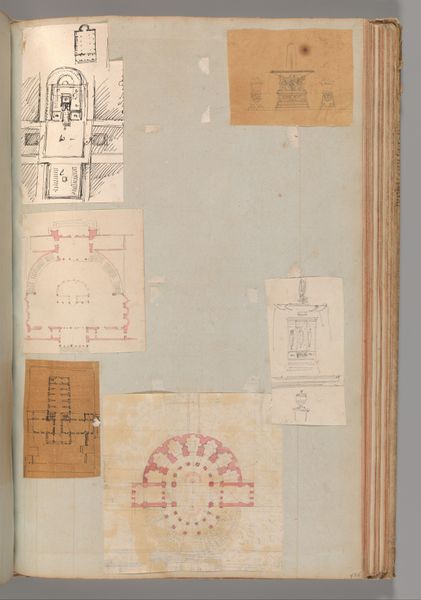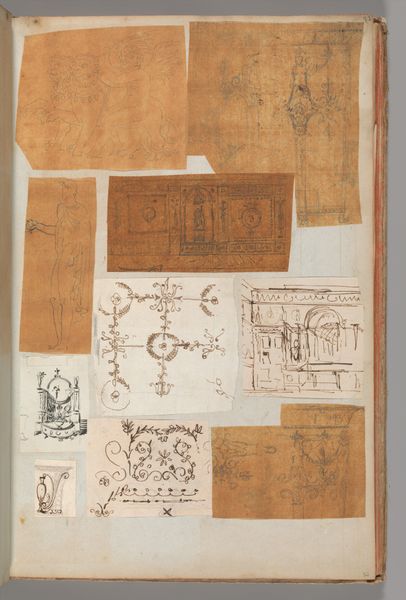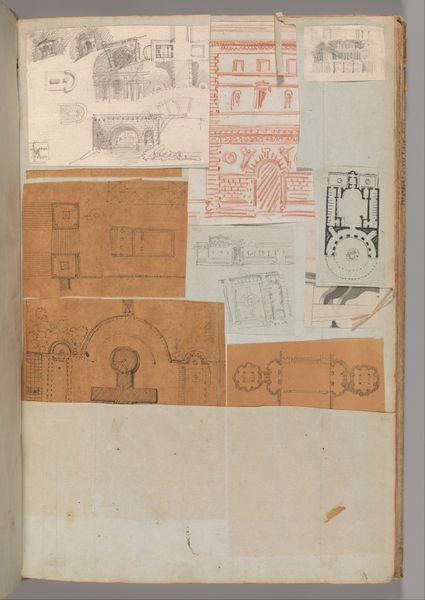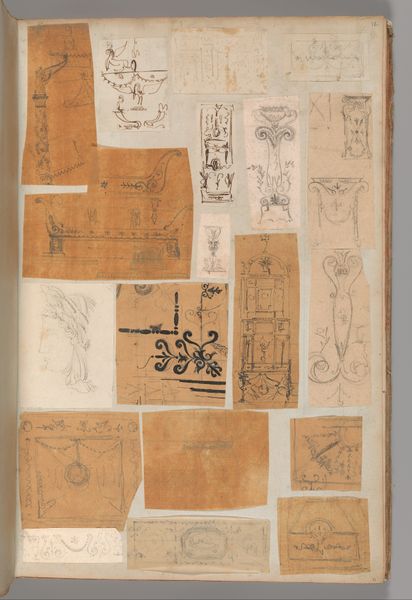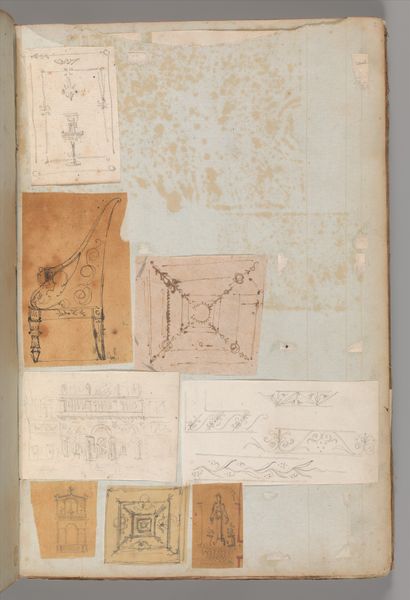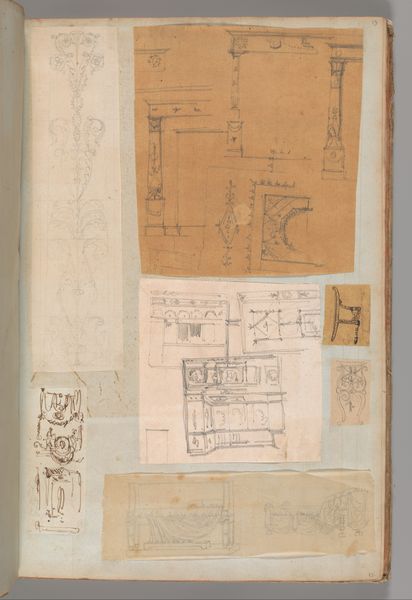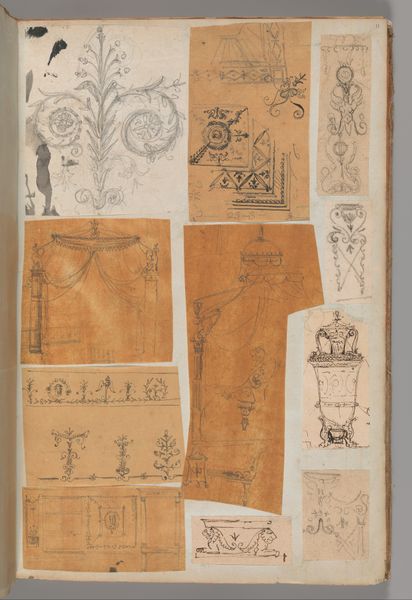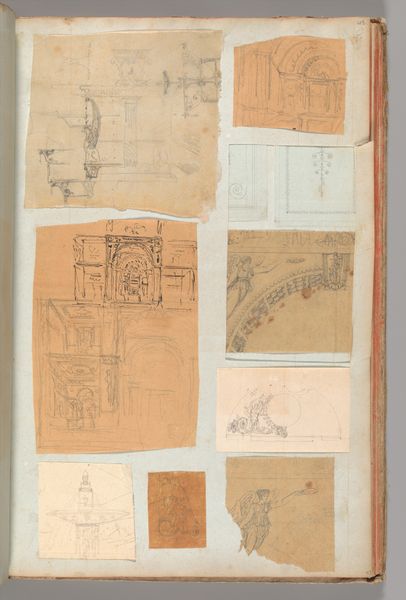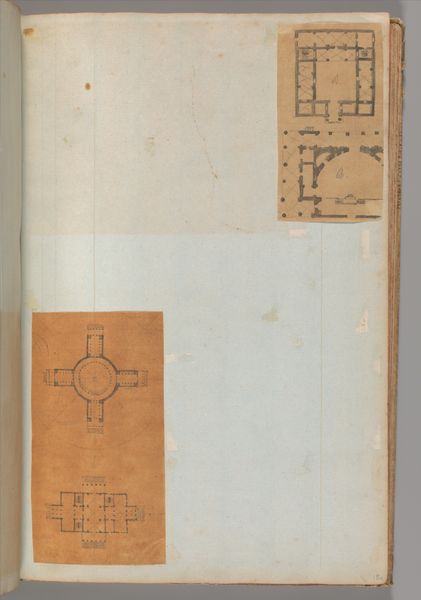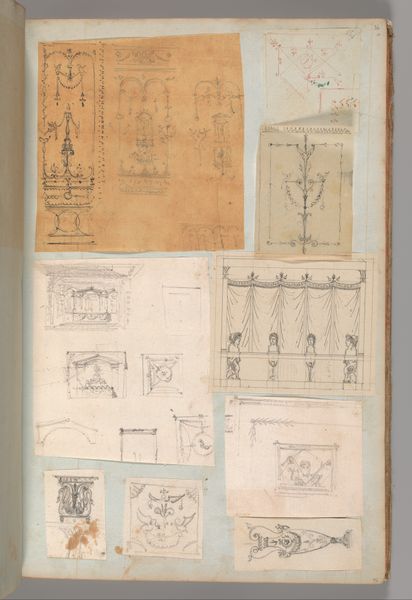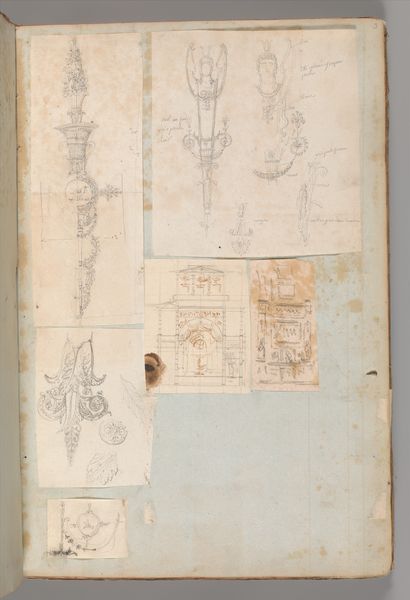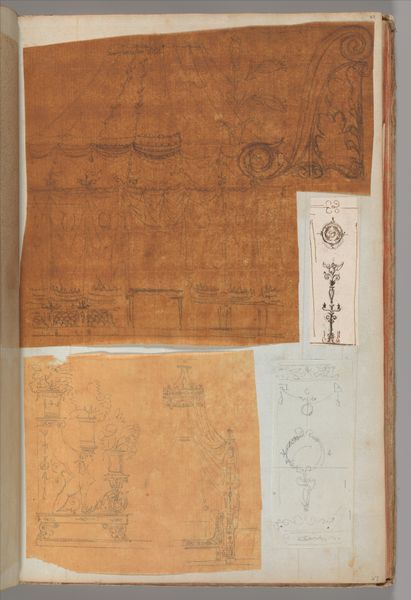
Page from a Scrapbook containing Drawings and Several Prints of Architecture, Interiors, Furniture and Other Objects 1795 - 1805
0:00
0:00
drawing, print, paper, pencil, architecture
#
drawing
#
neoclacissism
# print
#
paper
#
pencil
#
watercolor
#
architecture
Dimensions: 15 11/16 x 10 in. (39.8 x 25.4 cm)
Copyright: Public Domain
Curator: Here we have a page from a scrapbook by Charles Percier, created between 1795 and 1805. It's a fascinating collection of drawings and prints depicting architecture, interiors, furniture, and other objects. The work combines pencil, watercolor, and print on paper. Editor: It strikes me as a very intimate object. A peek inside the artist's mind. There’s something quite beautiful about these raw, almost fragmented studies. Curator: Indeed. Percier was a leading figure in the Neoclassical movement. What we see here isn’t just a series of random sketches. This scrapbook showcases his process, illustrating how classical forms and motifs were being adapted and reinterpreted for contemporary use. He was trying to design the look and feel of an Empire, literally. Editor: The Neoclassical aesthetic has always seemed intertwined with power structures to me. Its association with the French Empire points to how artistic movements can bolster socio-political ideologies, creating environments that visually reinforced hierarchy. Did these designs then find their way into the homes of wealthy or influential individuals of the time? Curator: Precisely. Percier's designs were hugely influential on the interiors and furnishings of the elite. He and his partner, Fontaine, were essentially defining the visual language of power, linking back to the grandeur of antiquity but tailoring it to Napoleon's ambitions. Consider the resurgence of symmetry, order, and idealized forms; these were visual metaphors for stability, authority, and a supposedly rational social order. Editor: Thinking about it in this light, these drawings and prints transcend being just interior designs. They become visual tools that contribute to the wider construction of an image that promoted social inequality. The classical style excludes the people in terms of domestic environments, in terms of lifestyles, in terms of… everything! Curator: That’s an excellent point. They bring an intimate view of the political motives and context linked to these images. What was once a tool for visual construction is seen for its potential inequality. Editor: Thank you for that background. It really helps consider art in a way where we can examine, dismantle, and, I hope, progress to a better society!
Comments
No comments
Be the first to comment and join the conversation on the ultimate creative platform.
